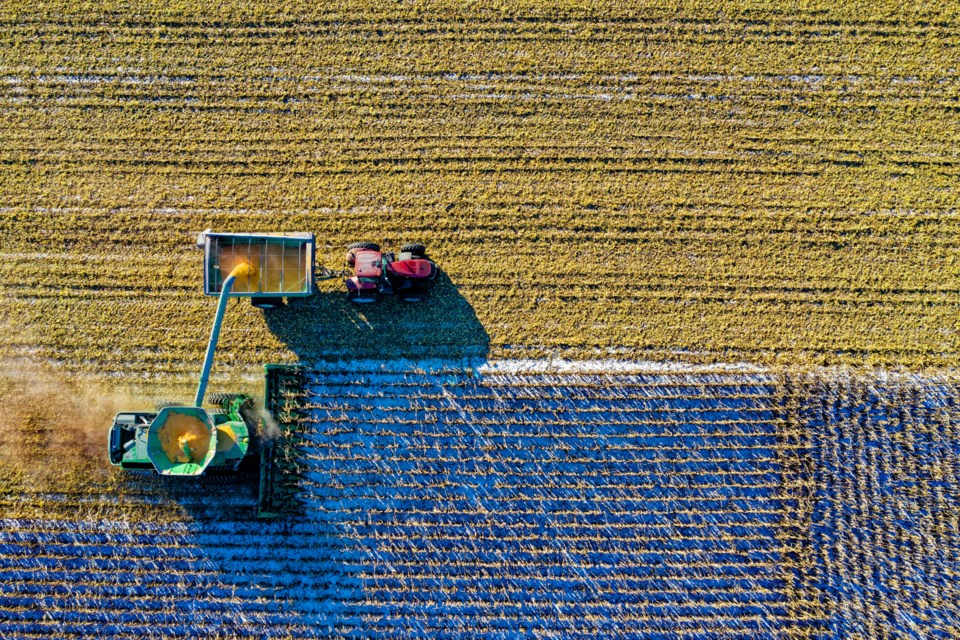Farm theft and trespassing incidents are increasing, and sadly, it’s a trend that is expected to continue as people struggle with inflation and growing fears of economic recession.
Crops and livestock are easy targets for thieves, along with equipment, fuel and other high-value farm items that may not always be protected.
Although some thefts are crimes of opportunity, professional criminals are increasingly engaging in daytime thefts as they’ve come to learn that many people in rural areas are away from their properties during the day.
It’s not always theft that brings people onto farm properties without permission, though.
Reports of people going onto farms uninvited in search of that perfect Instagram photo in a field of sunflowers, pumpkins or canola in full bloom are on the rise, for example.
Right now, it’s fall hunting season, and although hunters are strongly encouraged to ask landowners for permission before going onto their properties, not everyone extends that courtesy. We’re also just a few weeks away from winter, which means snowmobiling and other winter sports that take people outside.
My family farms in Oxford County and we often deal with people riding their all-terrain vehicles through our property or using our land for horseback riding without our permission. Not only is that trespassing, but what may seem like an innocent outdoor activity actually causes damage on the farm.
The fall is when we prepare our fields for next year’s crops, and whether someone criss-crosses the land on a horse or an ATV, that activity will leave behind an impact that we will feel well into the next growing season and sometimes longer in the form of damage to crops and soil.
But there can also be unforeseen dangers for the people who are engaging in trespassing. Some farms, like ours, harvest sap for maple syrup production, which means there are sap lines running through the bush. On other farms, equipment can be stored outside that isn’t visible when it’s covered by snow, posing risk of unexpected injury.
We are livestock farmers, and for us, trespassing comes with another very serious threat: the potential for animal diseases to come onto our farms that can seriously harm or even kill our herds or flocks. Most livestock and poultry farms follow what we call bio-security protocols – specific steps and processes designed to keep our animals safe from disease.
That includes keeping uninvited visitors away from buildings and barnyards, for example, to minimize the risk of disease that could wipe out an entire livestock herd or poultry flock. It may not seem like a big deal to most people, but it is a very big deal to those of us who care for livestock every day.
Our farms are our businesses, so trespassing is an important issue for farmers and our livelihoods. Our farms are also where we live, however, so it’s also an issue of safety and security for us and our families.
It’s important for Ontarians to be aware of trespassing rules and their responsibilities around making sure they ask permission before they enter private property or staying on marked, designated trails if out snowmobiling, for example.
But there are also actions that farmers and rural landowners can take to help protect their property against trespassing and theft.
According to law enforcement, posting clearly visible “no trespassing” signs is the best way to let people know they are not welcome to roam your property without your consent. Although signs won’t necessarily keep intruders out, having them clearly visible at every entry to your property will help build a case with police if you do have an incident.
Watch for unknown tire tracks, discarded cigarettes, garbage, or alcohol containers on or near your property, as well as drones flying overhead that may be collecting information for theft or activism. Locations can be scouted before they are targeted, whether for theft or even anti-agricultural activist activity, so keep an eye out for people who look out of place or who are taking photos of vehicles or people.
Be careful what you post on social media about where your farm is located, or if you’re going to be away etc. While farmers try to be transparent online about farming practices and helping people understand where their food comes from, it’s important we don’t become targets or inadvertently place our families or our farms in jeopardy.
More information about how to protect your farm or rural property against theft and trespassers is available in this Securing your assets fact sheet from the Ontario Federation of Agriculture.
Tracey Arts is a director with the Ontario Federation of Agriculture.



